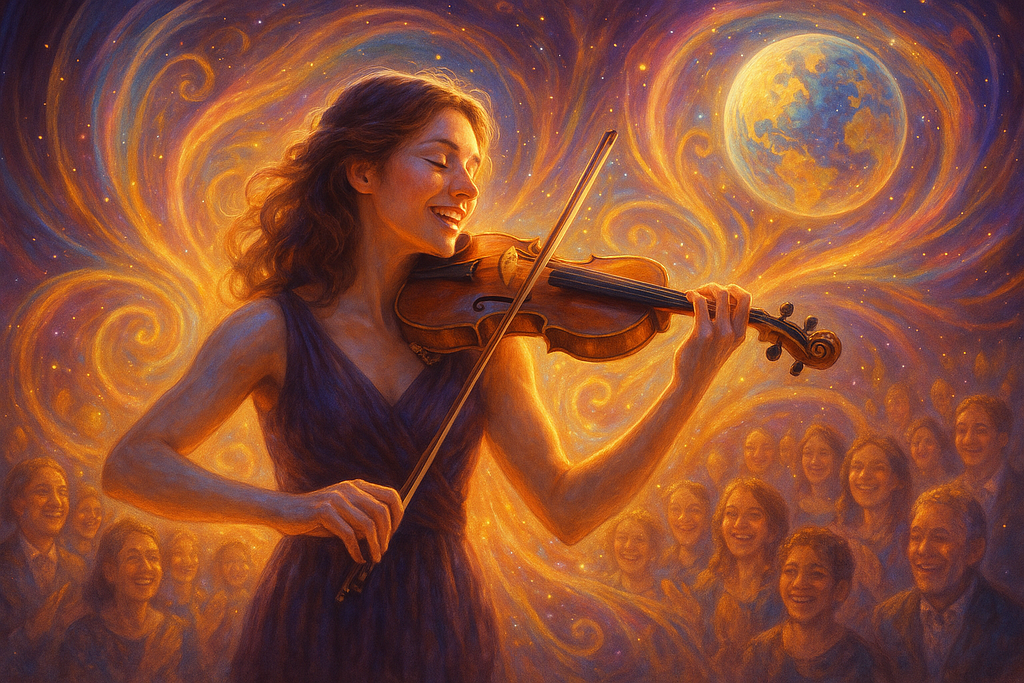The arts have the potential to connect humanity with the larger forces of nature. If this potential were fully realized, this could have a transformative effect on humanity’s relationship with our planet. The Soulforce Arts Approach has been designed to help musicians and other artists evoke this transformative effect in how they create, perform, practice, and teach.
In this video I read an excerpt from my upcoming book on the deep connection between the arts and the larger forces of nature. This excerpt is from Chapter 1 on “The Wrongness in the Arts.” See the excerpt written in full below.
Be among the first to know about my upcoming book “Soulforce Arts: The Vital Role of Musicians & Other Artists in a World That’s Lost Its Mind” by signing up for my mailing list at JosephArnold.com and soon at SoulforceArts.com.
Joseph Arnold
Violinist, Alexander Technique Teacher, Director of the Soulforce Arts Institute
The Arts & Disconnection from Nature
When modern arts institutions are disconnected from Soul, they betray the full transformative potential of the arts, which is to connect humanity with the larger forces of nature, and to bring us into a state of participation with the cosmos. However, our arts institutions have largely forgotten this potential, and instead play a smaller game, unduly agreeing to the reduction of art to solely aesthetic or economic functions in society. And while these functions have their place, they are clearly insufficient to bring humanity into a state of participation and connection with the forces of nature. By neglecting this larger potential, our arts institutions actually contribute to our society’s dismissal of the arts as frivolous, and fall short of their responsibility to guide humanity into a more harmonious relationship with ourselves, each other, and our planet.
But it hasn’t always been this way. Many Native American peoples, for example, “thought of the whole act of living in harmony with nature as their art,” and consequently didn’t even have a term for art as such because they never felt they needed it. Similarly, the whole of ancient Egyptian art and architecture had the explicit goal of inducing an altered state of consciousness that revealed the universal harmony between humans and the cosmos at large. The Egyptians achieved this to such a degree that even people who visit their temples today often report experiencing this altered state of consciousness. And what our own society considers to be among the greatest works of art also share this transformative quality; for example, Chartres Cathedral, Beethoven’s late string quartets, and Dostoyevsky’s The Brothers Karamazov. But these are the exception and not the rule.
In the absence of the explicit intention to connect humanity with the forces of nature, the arts today are believed to be a uniquely human affair. This belief shapes the arts into a self-referential hall of mirrors in whose reflections we only ever find confirmation of humanity’s disconnection from nature. Art made for social commentary, political or economic gain, or as mere self-expression (“art for art’s sake”) are all reflections in this hall of mirrors.
This kind of art, and the institutions that propagate it, cut artists off from the source of authentic creativity that lies within, a source which follows the same natural laws as the trees and the stars. It deprives audiences of the experience of universal harmony their Souls long for. It deprives society of the elevation of more beneficial goals than money, status, and power. And it deprives humanity of the felt connection with the forces of nature that might otherwise guide us into a more harmonious relationship with our planet.



